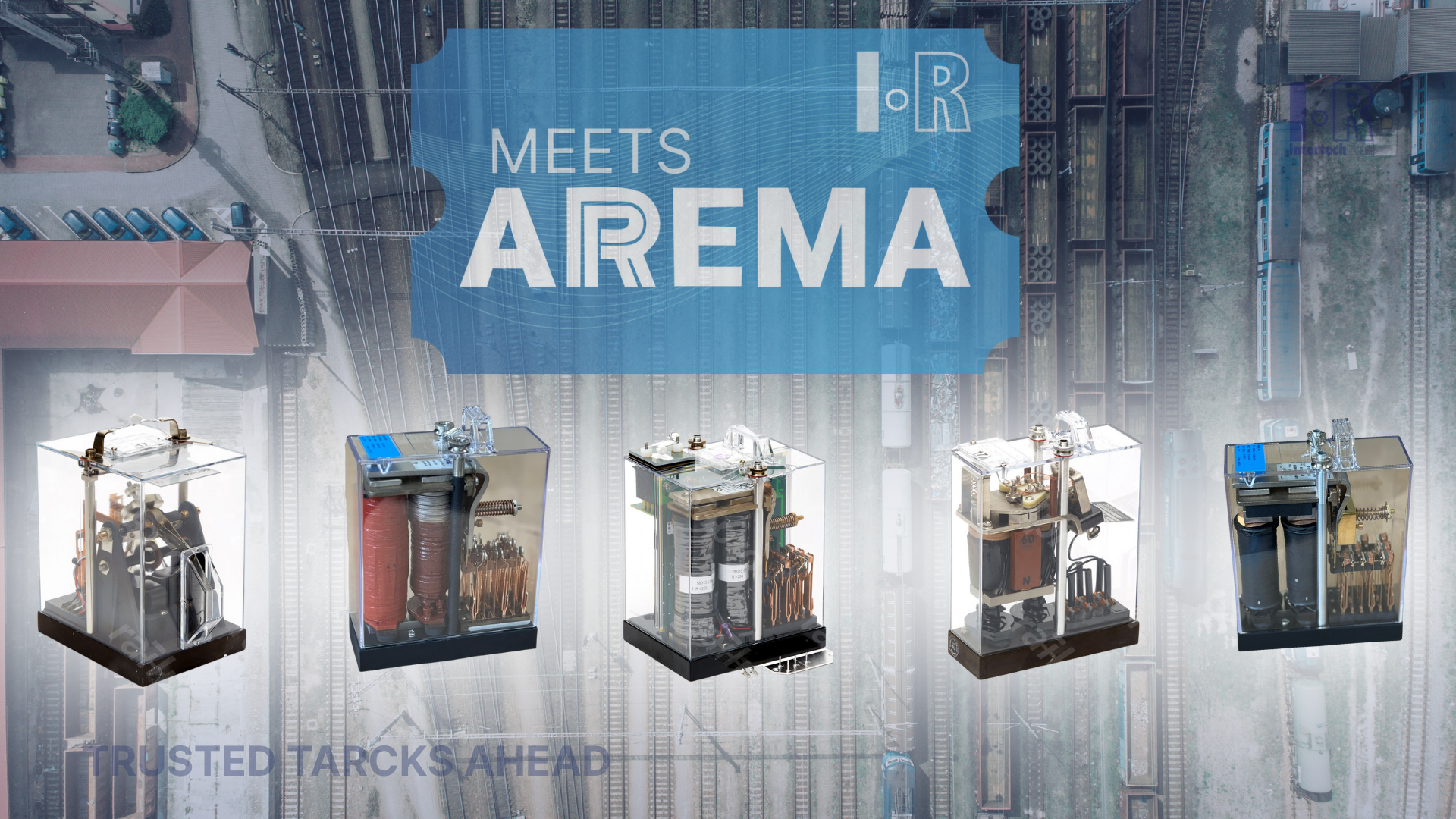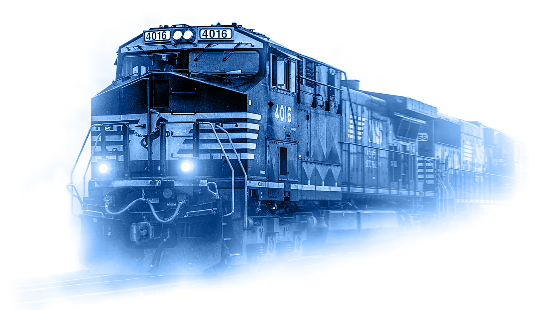Entre em Contato
555-555-5555mymail@mailservice.com
Enhancing Rail Logistics: IntertechRail's Monitoring System

Maintaining the flow of commodities depends on effective rail logistics in large-scale operations. One of the top logistic companies in Brazil implemented a complete system created by IntertechRail to enhance the tracking and monitoring of its railcars. Axle counting and RFID technology are used in this system to improve accuracy and operational autonomy while meeting the demand for consistent, dependable data processing in rail transportation.
Monitoring Infrastructure
A strategic architecture that guarantees accurate railcar tracking across the network serves as the foundation for the system. Two monitoring poles are part of the installation and are placed at strategic locations along the track:
• Pole 1: Outfitted with an RFID antenna that ensures precise tracking data by reading the tags on the railcars as they pass.
• Pole 2: Features a reinforced box containing the system's essential parts, a solar panel for self-sufficient power, and an extra RFID antenna, ensuring that the monitoring system continues to function even in the absence of external power sources.
Key System Components
Several essential parts are incorporated into the system to enable ongoing operation:
• AEI System (Automatic Equipment Identification): The Xtreme Intertech Rail RFID reader, which collects and processes data from passing railcars, makes accurate identification and tracking possible.
• Battery: By storing energy for ongoing operation, a high-capacity battery guarantees the system's performance even under low light levels.
• Charge Controller with Solar Power: By using solar panels to recharge the battery, the system reduces the requirement for external electrical infrastructure and offers a sustainable power source.
• RAILID Edge: Adapted to customer integration, its Embedded Industrial PC/modem ensures flawless system connectivity by enabling steady and uninterrupted data transfer to the cloud.
Axle Counting for Enhanced Precision
The Axle Counter, which is situated directly on the railroad track, is a crucial component of the monitoring system. This device adds another level of accuracy to the tracking process by precisely counting the number of axles of each railcar that passes by the monitoring location and ensures the system can build the 'train consist,' determining the direction of the composition and recognizing railcars without RFID tags.
Data Processing and Integration
Axle counter and RFID data are processed by the AEI system before being sent to IntertechRail's RAILID platform via EDGE. After that, the data is arranged and made accessible through API, enabling smooth integration with customers' internal systems. Without requiring user intervention, the interface provides real-time data for operational improvement, improving overall logistics management.
Project Advantages
• Autonomous Operation: By running on solar power, the system minimizes operational disruptions and depends less on external electrical sources.
• Accurate Tracking: Railcars are identified and tracked with extreme precision as they pass through the monitoring locations thanks to the combination of RFID and axle counting.
• Sustainable Power Source: The system's battery is charged by solar panels, which guarantees a dependable and environmentally responsible power source.
• Real-time data transmission allows for current monitoring and decision-making since data is sent to the cloud instantly.
• Seamless System Interaction: Operations are made easier and logistics data is better managed thanks to the API-based interaction.
At the end of the line:
IntertechRail's monitoring system serves as an example of how strategic infrastructure and cutting-edge technology can improve rail logistics. With the use of solar energy, the system promotes sustainability while providing increased operational autonomy, data accuracy, and integration possibilities. This solution gives customers the resources they need to improve train operations and promote future logistics management that is more effective.

April 13, 2025
Tags are essential parts of the railway sector that improve operations, increase safety, and simplify asset management. These little gadgets are essential for regulating signals, automating procedures, and supplying real-time data. This article examines the fundamental ideas of tags, their varieties, and cutting-edge Transcore-powered solutions. The Importance of Tags in Railway Systems Railway tags are small electronic devices used for data storage and transmission that are fastened to trains, signals, or other infrastructure. To manage schedules, keep an eye on train movements, and maximize safety, their main job is to connect with automated systems like Automatic Train Control (ATC). Additionally, tags improve overall efficiency and safety by tracking assets like railcars and providing real-time data for maintenance. Thanks to developments in tag technology, numerous kinds of tags that are appropriate for diverse situations and demands have been created. With the help of Transcore, some of these tags provide customized solutions for challenging situations. Let's examine the many kinds of tags and how they are used in the railroad sector. What is a Tag? A railway tag is a tool used to transmit data to a reader or control system. There are several uses for these tags, including: Identifying assets (railcars, infrastructure) Managing train movements Enhancing safety features (e.g., speed limits) Automating train control and scheduling To keep the railway network running smoothly, the tag's data is usually read by a sensor or reader as the train passes. Types of Railway Tags In the railway sector, various kinds of tags are made to meet particular requirements, such as asset tracking, signaling, and automated system communication. Let's examine the main categories of railroad tags. 1. Half Frame and Full Frame Tags These terms describe the tags' dimensions and ability to store data. In the railway industry, they are frequently employed for asset identification. Half Frame Tags: Perfect for straightforward tracking and identification in spaces with limited space or when less data is required, half frame tags are smaller in size and have a smaller data store capacity. Full Frame Tags: More substantial, larger, and capable of storing more info. These tags may interact with automated systems to send additional information and are utilized for more complicated applications, such as thorough asset management. For asset tracking, both kinds are necessary, but full-frame tags are more adaptable because of their larger data capacity. 2. Signal Tags Signal tags are essential for contact with the railway's signaling system. When a train passes, they communicate with crossing gates, trackside signals, and other infrastructure to send critical information. Functions of Signal Tags include: Triggering signal changes (e.g., stop, go) Updating train schedules Sending alerts to the control center in case of issues By automating reactions to real-time events, signal tags increase railway operations' safety and effectiveness. They can even affect train speed and routing when combined with Automatic Train Control (ATC) systems, making train movements safer and more effective. 3. Tags for Harsh Environments TransCore is a pioneer in creating cutting-edge tag solutions for the railroad industry. Their solutions are made to function dependably in demanding settings, guaranteeing that railroad operations continue to be secure and effective even in the most severe circumstances. Harsh Environment Balise: A reliable trackside beacon that is incorporated into signaling networks. Balizes interact with trains to initiate particular operations, such as modifying the speed or updating the schedule. To ensure dependable communication in challenging circumstances, these tags are designed to resist high temperatures, intense rain, snow, dust, and vibrations from passing trains. Harsh Environment Tag: Similar to the balise, this tag is utilized for safety-critical applications, asset tracking, and train equipment monitoring. These tags are perfect for industrial regions or places subjected to extreme conditions because they are long-lasting, provide long-range data transmission, and are corrosion-resistant. High-Temperature Tag: Designed to function in hot conditions, such as those found next to power plants or in hot industrial areas. Because these tags can tolerate higher temperatures than regular tags, asset management and safety systems will continue to operate even in extremely hot or cold environments. The Importance of Tags for Railway Operations Tags are crucial to the operation of modern railway systems. Here are a few reasons why they are so important: Automation: By automating tasks like asset management, movement control, and rail signaling, tags help to lower human error and boost operational effectiveness. Safety: By enabling instantaneous communication between trains and trackside systems, tags guarantee that vital safety information is conveyed promptly. This is particularly crucial in places with heavy traffic or difficult circumstances Efficiency: Railway operators can improve overall efficiency by optimizing timetables, maintenance, and resources using real-time data gathered from tags. Furthermore, tags enable predictive maintenance by spotting possible problems before they become serious ones. Asset Management: By keeping railcars, locomotives, and other pieces of equipment well-maintained and reducing downtime, tags aid in asset management. They are essential for raising efficiency and lowering maintenance expenses. The Future of Railway Tags Railway tags, particularly in automated systems, have improved safety, efficiency, and dependability, revolutionizing train administration. Advanced tags from Transcore, such as Signal Tags, Harsh Environment Balises, and High-Temperature Tags, offer strong, long-lasting solutions for contemporary train operations. These technologies will become even more important as the sector develops, enabling safer, more efficient operations under challenging circumstances. Leading the way in innovation, Transcore will influence the development of more automated and dependable rail networks for both passengers and cargo in the future.

April 8, 2025
This article explores the importance of AREMA (American Railway Engineering and Maintenance-of-Way Association) standards in the global railway industry. It explains how these guidelines enhance safety, interoperability, durability, and compliance with legal requirements. The piece also highlights the role of AREMA standards in railway relays, showcasing IntertechRail’s range of high-quality, AREMA-compliant relays that contribute to safer and more efficient railway operations worldwide.
Contact Us




1501 Venera ave Suite 320A Coral Gables, FL 33146
+55 11 985974011 (Brazil)
+1 614 302 1900 (USA)
Intertech Rail 2024 - All Rights Reserved





